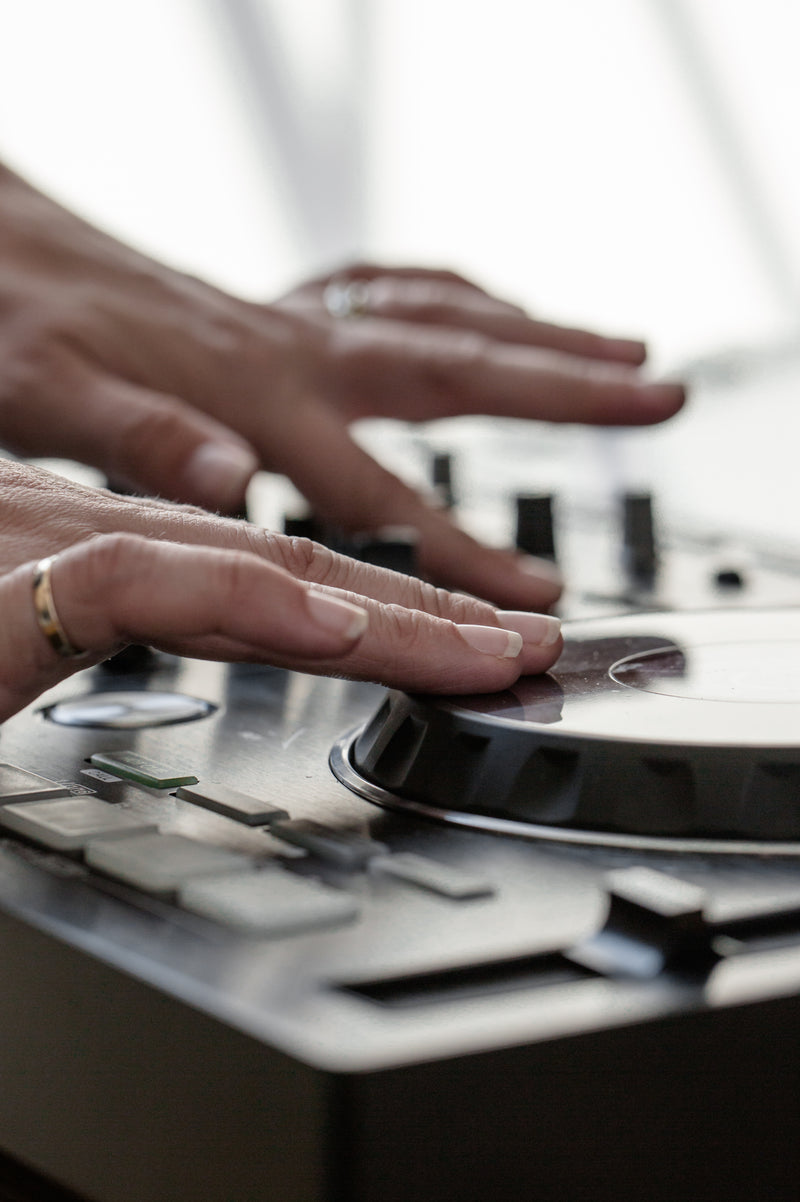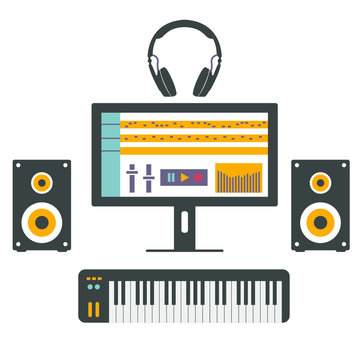If you’re a music producer looking for a new operating system to power your creativity, Linux might just be the answer. With its open-source nature and flexibility, it can offer a unique and customizable experience for music production. However, if you’re new to Linux, getting started can be a daunting task. In this blog post, we’ll guide you through the basics of music production on Linux and give you the tools to get started on your musical journey. So, whether you’re a seasoned producer or just starting out, keep reading to discover how to make the most of Linux for music production.
Table of Contents

Why Linux is a Great Platform for Music Production
Linux is a powerful and versatile operating system that has become increasingly popular among music producers. Open-source software and tools make it an affordable option for those who want to get started with music production. Linux offers a stable and reliable platform for music production, with a vast array of audio applications and plugins available. It also provides excellent performance, even on older hardware, making it an ideal choice for those on a budget. With Linux, you have complete control over your system, allowing you to customize your setup to meet your specific needs. Whether you’re a beginner or an experienced producer, Linux provides an excellent platform for music production that is both powerful and flexible.
Understanding the Basics of Music Production on Linux
Music production on Linux is a great alternative for those who want to break free from the proprietary norms of macOS and Windows. As an open-source platform, Linux offers more flexibility in terms of customization and configuration options. However, it requires a bit of learning curve to get started in music production on this system.
To begin with, you need to have a basic understanding of digital audio concepts such as sampling rate, bit depth, and file formats. It’s also important that you are familiar with common recording terminologies like tracking, mixing and mastering.
Once you have grasped these fundamental concepts for music production on linux, it’s time to start exploring software packages that will become your digital audio workstation (DAW). Some popular choices include Ardour (a multi-track recorder), Qtractor (a MIDI sequencer) or Mixbus (an analog-style mixer).
It’s best practice to experiment with different DAWs until you find one that suits your workflow style before committing fully. You can then augment your setup by adding essential tools including plugins for EQing/Compressing sound components or software instruments such as samplers or synthesizers.

Essential Tools and Software for Your DAW Setup
When it comes to music production on Linux, there are several essential tools and software that you’ll need to get started. First and foremost, you’ll need a digital audio workstation (DAW) to record, edit, and mix your tracks. Ardour is a popular open-source DAW that offers a range of features for professional-level music production.
In addition to Ardour, you’ll also need a collection of plugins to enhance your sound. LADSPA and LV2 are two popular plugin formats that work well with Linux-based DAWs. Some essential plugins include EQs, compressors, and reverbs.
To monitor your recordings, you’ll need an audio interface that connects your instruments or microphones to your computer. Focusrite Scarlett and Behringer U-Phoria are two popular options that work well with Linux.
Lastly, don’t forget about the importance of sample libraries for adding depth and texture to your tracks. The LinuxSampler is a powerful tool for loading and playing sample libraries in your DAW. With these essential tools in place, you’ll be well on your way to creating professional-quality music on Linux.

Tips for Optimizing your Linux system’s Performance
Optimizing Your Linux System for Music Production
To optimize your Linux system for music production, there are a few things you can do. First, make sure you have the latest version of your distribution installed, as this will ensure you have access to the latest drivers and software updates. Additionally, consider disabling any unnecessary services or programs that may be running in the background, as these can eat up valuable system resources. Finally, consider investing in a high-quality audio interface and using a low-latency kernel to reduce latency and improve overall performance. By taking these steps, you can ensure that your Linux system is optimized for music production and ready to help you create your next masterpiece.
Processor and RAM Considerations for Music Production on Linux
When it comes to music production on Linux, having a system with ample processing power and memory is essential. Processor speed and RAM are key considerations that directly impact the performance of your Digital Audio Workstation (DAW) setup. A multicore processor with a higher clock speed will enable faster audio rendering, while more RAM will allow for smoother multitasking between different software programs or plugin instances. It’s recommended to have at least 8 GB of RAM for most music production tasks, but higher amounts can be beneficial for larger projects or working with orchestral samples. Invest in hardware upgrades if needed to ensure optimal performance from your Linux system.
Audio Interfaces and Drivers for Optimal Performance on Linux
When it comes to getting started with music production on Linux, optimizing your system’s performance is crucial. One key aspect to consider is your audio interface and drivers. It’s important to choose an interface that is compatible with Linux and has reliable drivers. Some popular options include Focusrite Scarlett, Behringer U-Phoria, and Presonus AudioBox. Additionally, make sure to install the appropriate drivers for your interface and keep them up to date. This will ensure that you have low latency and stable performance while recording and mixing tracks in your DAW.
Tips and Tricks to Improve Your Music Production Workflow on Linux
To improve your music production workflow on Linux, there are a few key tips and tricks to keep in mind. Firstly, make sure to regularly update your system and software to ensure optimal performance. Additionally, consider using lightweight desktop environments such as XFCE or LXDE to reduce system resource usage. Another important aspect is to optimize your audio settings, including adjusting buffer sizes and sample rates for your specific setup. Finally, don’t forget to utilize keyboard shortcuts and customize your DAW’s interface to streamline your workflow and save time. By implementing these tips, you can ensure a smooth and efficient music production experience on Linux.

How to Record, Edit and Mix tracks using Ardour
Recording, editing, and mixing tracks on Linux can be done using a Digital Audio Workstation (DAW) software like Ardour. Ardour is a popular open-source DAW that offers advanced features for music production. To record audio, you need to connect your microphone or instrument to an audio interface and select it as the input device in Ardour. You can then create a new track and arm it for recording. Once you’ve recorded your audio, you can edit it using Ardour’s powerful editing tools. You can cut, copy, paste, and move audio regions with ease. To mix your tracks, you can use Ardour’s mixer console which allows you to adjust levels, pan, and add effects to your tracks. Plugins are also available in Ardour to enhance your sound with various effects like reverb, delay, compression, and more. With Ardour’s intuitive interface and powerful features, you can produce professional-quality music on Linux.

Navigating MIDI, Audio Interfaces and Plugins
MIDI is a crucial aspect of music production, and Linux offers several options for working with it. One popular choice is QjackCtl, which allows you to connect MIDI devices and route signals between them. You can also use software synthesizers like ZynAddSubFX or Yoshimi to create MIDI sounds.
When it comes to audio interfaces, Linux supports a wide range of devices, including USB and FireWire interfaces. Popular options include the Focusrite Scarlett series and the Behringer U-Phoria series. It’s important to make sure your interface is compatible with Linux before purchasing.
Finally, plugins are essential for adding effects and processing to your tracks. Linux offers a variety of plugins, including LV2, LADSPA, and DSSI formats. Some popular choices include Calf Studio Gear and Guitarix. Keep in mind that not all plugins are compatible with all DAWs, so be sure to check compatibility before installing.

Troubleshooting Common Issues in Music Production on Linux
Despite being a reliable platform, Linux can still encounter some issues when it comes to music production. One of the most common issues is compatibility with plugins. While there are many open-source plugins available, they might not work seamlessly with your DAW setup. A workaround for this is using a plugin bridge like Carla or LinVST to convert Windows VSTs into compatible plugins.
Another issue that could arise is audio latency, which occurs when the audio takes too long to process, causing delays in recording and playback. To reduce latency, you can adjust buffer size and sample rate settings in your audio interface driver or use specialized software tools like JACK Audio Connection Kit.
Lastly, system freezes and crashes may occur during intensive processing operations such as rendering large tracks or using heavy resource-hogging plugins. This can be avoided by allocating sufficient system resources (RAM/CPU) for music production tasks and monitoring system temperatures regularly to prevent overheating.
By familiarizing yourself with these troubleshooting tips beforehand, you’ll have an easier time tackling any obstacles that come your way while producing music on Linux.
In conclusion, getting started with music production on Linux can be a bit daunting, but it’s not impossible. With the right mindset, tools and knowledge at your disposal, you can create amazing music that rivals anything produced on proprietary platforms. Remember to take time out to explore all the features of your DAW software and experiment with different MIDI controllers, plugins and effects until you find what works best for you. And if you need further guidance or inspiration along the way, be sure to check out our other content on Music Production tips and tricks!


